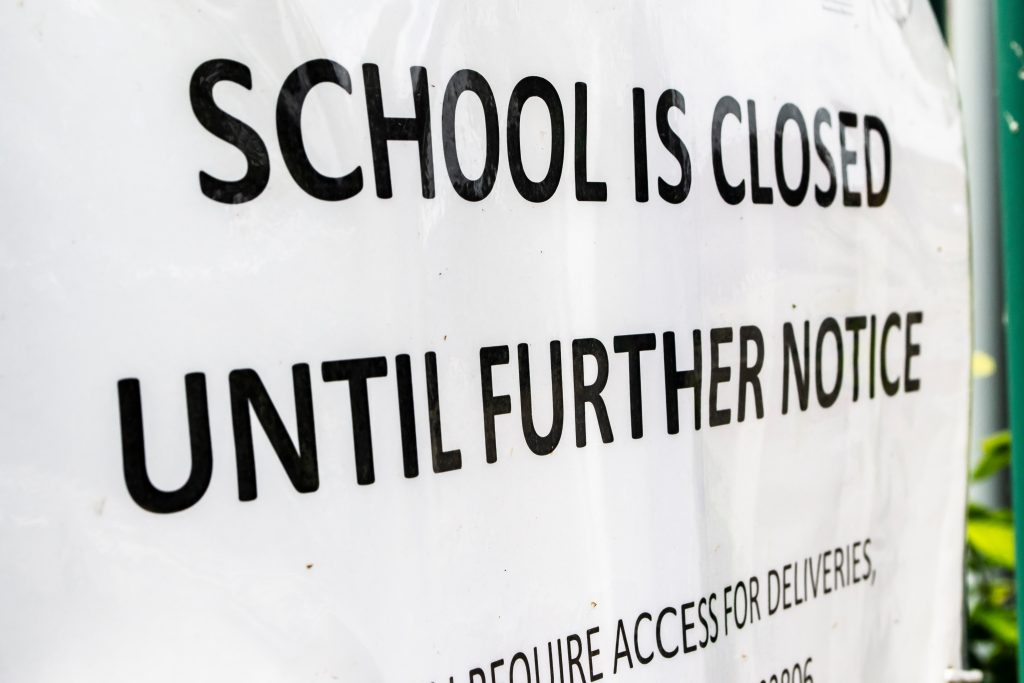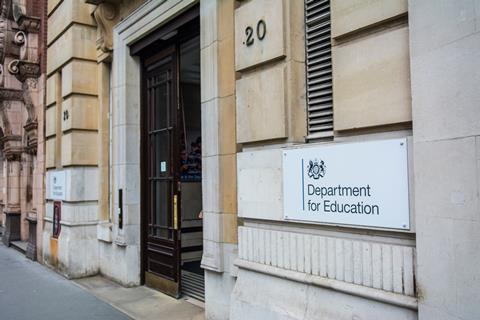Over 150 schools and at least 34 hospitals so far affected by RAAC issues – how much more extensive is the problem?

This post was originally published on this site

After the Department for Education (DfE) updated its guidance on mitigating the potential impacts of Reinforced Autoclave Aerated Concrete (RAAC) yesterday, at least 156 schools and 34 hospitals are now known to have the ‘weaker’ form of concrete present.
RAAC is a building material made from a combination of cement, lime, water and an aeration agent. It speeds up the manufacturing turnaround of precast concrete units. There is a high volume of air within RAAC, making it vulnerable to moisture ingress and it is now known to lose tensile strength in situ.
Of the schools where RAAC is known to be present in some buildings, 52 have already had safety measures put in place while the other 104 will not open to their full capacity at the start of term, while mitigation is put in place. Many reports have suggested at least 24 of those with no safety measures in place will have to fully close.
The Collaborative Reporting for Safer Structures said: “Although called concrete, RAAC is very different from traditional concrete and, because of the way in which it was made, much weaker.
“RAAC was used in schools, colleges and other building construction from the 1950s until the mid-1990s. It may therefore be found in any school and college building that was either built or modified in this time period.”
As these buildings are now passing their 30 year lifespans, structural failures have been seen at an increasing rate in recent years. A sudden roof collapse at a primary school in Essex in 2018 brought the RAAC issue to light.
Harley Haddow civil and structural director Colin Tait is surprised the RAAC issue is only just making mainstream media headlines. He stated that the failure mechanisms of RAAC planks have been known to structural engineers – and reported by NCE – for years.
He said: “A collapse of these planks could be catastrophic, which is why we are seeing such rapid action being taken.
“There are many reasons why these planks fail. Overloading, poor or limited plank support, excessive deflection and water ingress to name a few. Some of these flaws are down to poor design, poor construction, or simply down to poor maintenance.
“Cracking to the plank, particularly near its support and water ingress – whereby it turns the concrete, in essence, to a ‘sponge’ – were felt particularly worrying. Hidden behind false ceilings, collapse of these planks could be without warning and devastating.”
While RAAC has been identified in 156 schools in England, the number is expected to grow as more education establishments check for its presence. In June, a report by the National Audit Office revealed up to 572 schools had been identified where RAAC might be present within their buildings. The Scottish Liberal Democrat party has stated RAAC was found in at least 37 schools in Scotland. Elsewhere in the UK, the Department for Education in Northern Ireland is checking schools for RAAC as a matter of urgency and there have been no reported cases in Wales.
The reporting system put in place by DfE places the responsibility for identifying school buildings at risk of RAAC collapses on the schools, which has drawn criticism from the industry and education unions.
Arcadis education sector leader Andrew Dutton said the extent of the problem is difficult to quantify due to the difficulties in identifying RAAC.
He said: “RAAC is not really concrete, while it has some similarities to concrete, because of the way it is made it is far weaker.
“One of the main challenges is that it is not that easy to detect RAAC, it is typically in planks forming part of roofs and could be hidden behind suspended ceilings. So normal surveys and condition data do not necessarily confirm if RAAC is present.
“There is an increased risk of failure when RAAC has been damaged through roof leaks or building alterations.”
In response to the growing number of schools coming forward with RAAC present, National Education Union (NEU) general secretary Daniel Kebede hit out at the government’s handling of the situation.
He said: “This situation will cause massive disruption to the education of thousands of children and huge inconvenience to school leaders. The blame of course lies firmly with this government whose perpetual lack of investment in school buildings has left our school estate in such a dire state of disrepair.
“For months the NEU has been pressing the government to publish a full list of schools with buildings at risk of collapse, but this has not happened.
“We are not confident that the government has a proper plan to address this immediate issue with the urgency it requires, let alone the wider issue of capital funding to ensure school buildings are fit for the future. There are 156 schools with confirmed RAAC but how many more where it has not yet been identified?”
This viewpoint has been echoed by NASUWT the Teachers’ Union general secretary Patrick Roach who believes it is only luck that has prevented a disaster from happening.
He said: “Although we welcome that the DfE has finally taken action to safeguard pupils and teachers, it would appear that mere luck rather than judgment has prevented a major disaster from occurring.
“Nothing is more important than ensuring the safety of children and young people and those who work in our schools.
“It is a disgrace that, despite ministers’ promises to the contrary, there are any schools in such poor condition and state of repair and in danger of collapse.”
Secretary of state for education Gillian Keegan said: “Successive governments since 1994 have worked to manage the risks of RAAC to ensure the safe delivery of services, and just over 50 education settings have already been supported to put mitigations in place this year.
“We have been talking to schools about the potential risks of RAAC since 2018. Recent RAAC cases have reduced our confidence in buildings with confirmed RAAC, which is why we are taking the precautionary and proactive step to change our approach and have published guidance to that effect.”
The problem doesn’t just affect education buildings too. Following the National Audit Office’s report, the government expanded its inquiry into the use of RAAC to include the whole public estate rather than just schools as it was initially planned.
Currently, RAAC planks are believed to be present in at least 34 hospitals in England, up from the 20 believed to be built with the alternative concrete before. Earlier in the year, the government promised to rebuild seven hospitals most affected by RAAC by 2030. Added to this, Scottish authorities believe 250 NHS buildings across the country could have been built using RAAC.
Further, just over a week ago, Harrow Crown Court in North West London was closed for the foreseeable future after RAAC was discovered while building work was taking place. The RAAC planks are currently being replaced, which officials have stated could take anywhere from six to nine months.
Speaking on BBC Breakfast on Friday, UK schools minister Nick Gibb said: “Right across the public sector, we are surveying the estate.
“You’ve heard of a court closing at Harrow. We are taking action, of course, in the hospital sector as well. Hospitals are very large buildings and they have teams of very expert maintenance people monitoring the building the whole time.
“They use propping where they identify RAAC and also we are rebuilding seven hospitals because of extensive RAAC in those hospitals.”
Levelling Up, Housing and Communities Committee chair Clive Betts called for the scope of the RAAC investigations to be expanded.
He said: “There’s obviously got to be serious investigations now into hospitals, into other government buildings like courts but also into the housing stock.
“We don’t know where this concrete’s been used in the past.”
Law firm Ridgemont head of construction Tim Seal said: “The government has been managing the risks associated with RAAC since around 2018 by providing guidance (and funding) for owners and managers.
“However, some recent cases – including sudden roof failures – have caused it to decide that buildings containing RAAC should not stay open without extra safety measures being put in place.
“This can be considered as part of government’s policy emphasis over the last few years on the safety of buildings, especially those occupied by more vulnerable parts of society.
“RAAC was used from the 1960s to the 1990s in various types of public buildings – not just in schools, in hospitals for example.
“Not all remain in the public sector today. It would be sensible for building owners and managers at risk of having RAAC in their buildings to contact a qualified structural engineer or building surveyor for advice.”
While a full list of schools affected by RAAC has not yet been published by the DfE, here is a list of the schools known to have RAAC present so far:
- Abbey Lane Primary School in Sheffield
- Cockermouth School in Cockermouth, Cumbria
- Corpus Christi Catholic Primary School in Brixton
- Cranbourne College in Basingstoke, Hampshire
- Crossflats Primary School in Bradford
- Donnington Wood Infants School in Telford, Shropshire
- Eldwick Primary School in Bradford
- Ferryhill School in County Durham
- Hatfield Peverel Junior School in Chelmsford, Essex
- Haygrove School in Bridgwater, Somerset
- Hockley Primary School in Hockley, Essex
- Holy Trinity Catholic Academy in Newark-on-Trent, Nottinghamshire
- Jerounds Primary School in Harlow, Essex
- Katherines Primary Academy in Harlow, Essex
- Kingsdown School in Southend-on-Sea, Essex
- Mayflower Primary School in Leicester
- Mistley Norman Church of England Primary in Manningtree, Essex
- Outwoods Primary School in Atherstone, North Warwickshire
- Parks Primary School in Leicester
- Ravens Academy in Clacton-on-Sea, Essex
- Springfield Primary School in Chelmsford, Essex
- St Clere’s School in Stanford-le-Hope, Essex
- St Gregory’s Catholic Science College in Harrow, north west London
- St Leonard’s School in County Durham
- The Gilberd School in Colchester, Essex
- The Ramsey Academy in Halstead, Essex
- White Hall Academy primary in Clacton, Essex
- Willowbrook Mead Primary Academy in Leicester
- Winter Gardens Academy in Canvey Island, Essex
- Wood Green Academy in Wednesbury, West Midlands
Like what you’ve read? To receive New Civil Engineer’s daily and weekly newsletters click here.





Responses